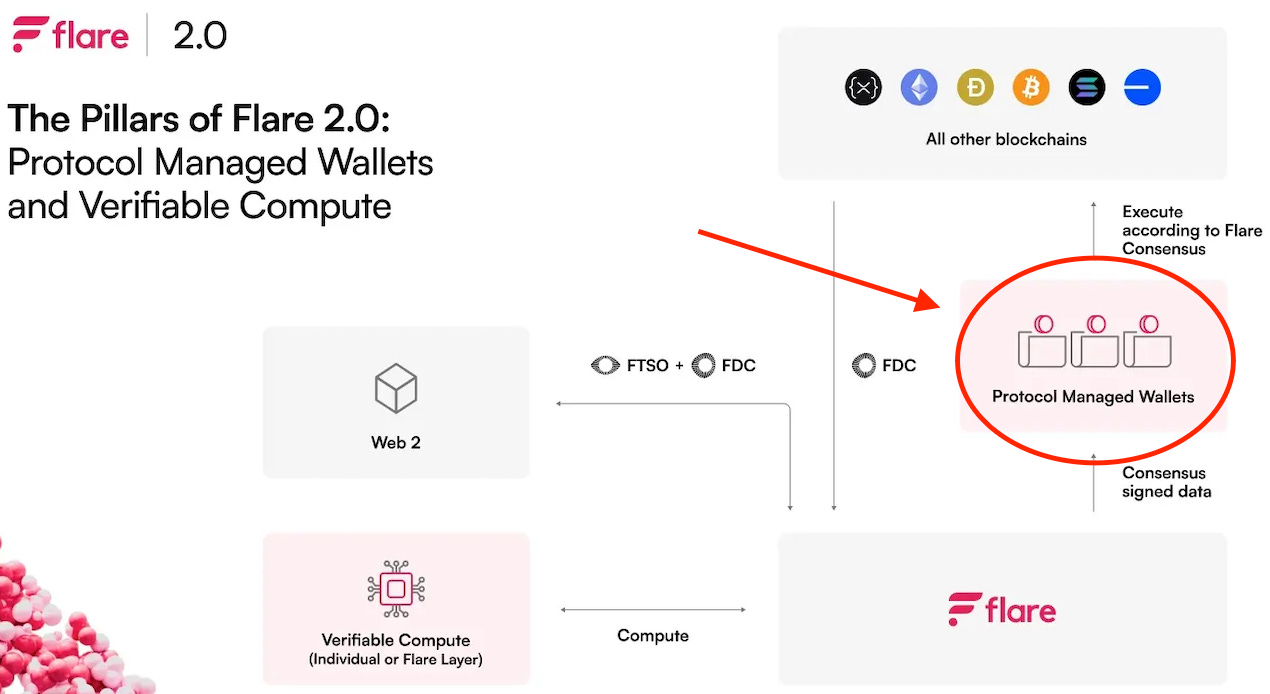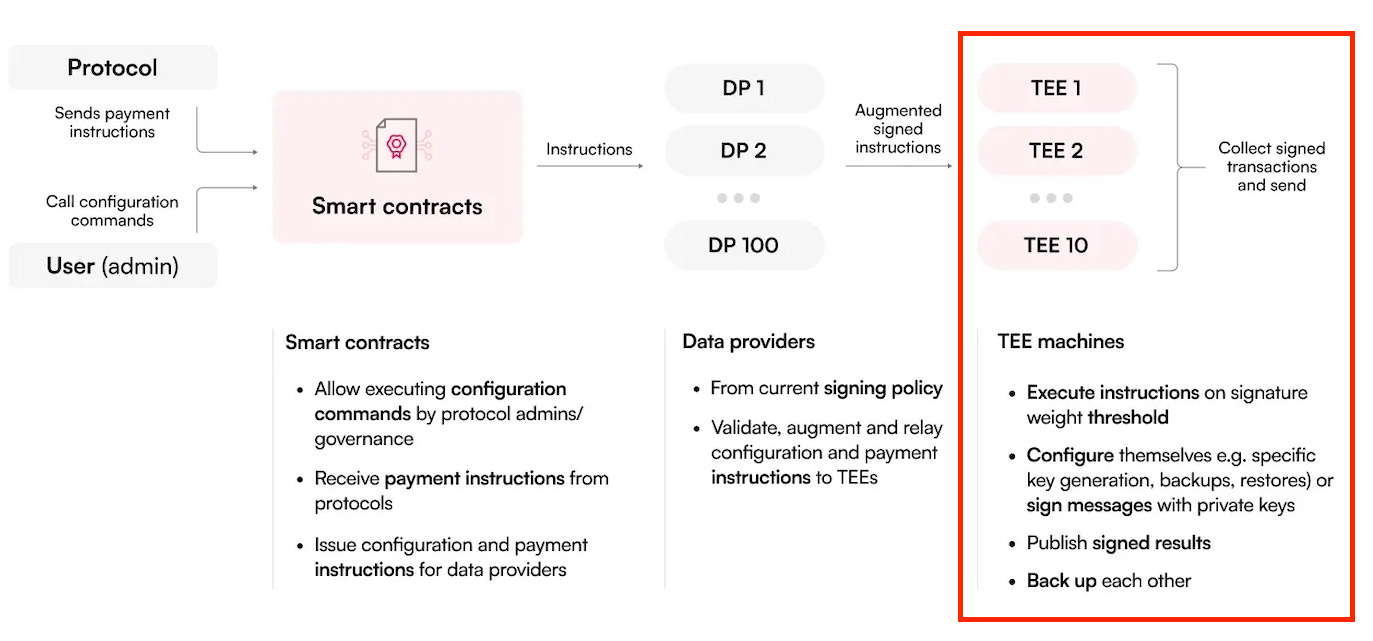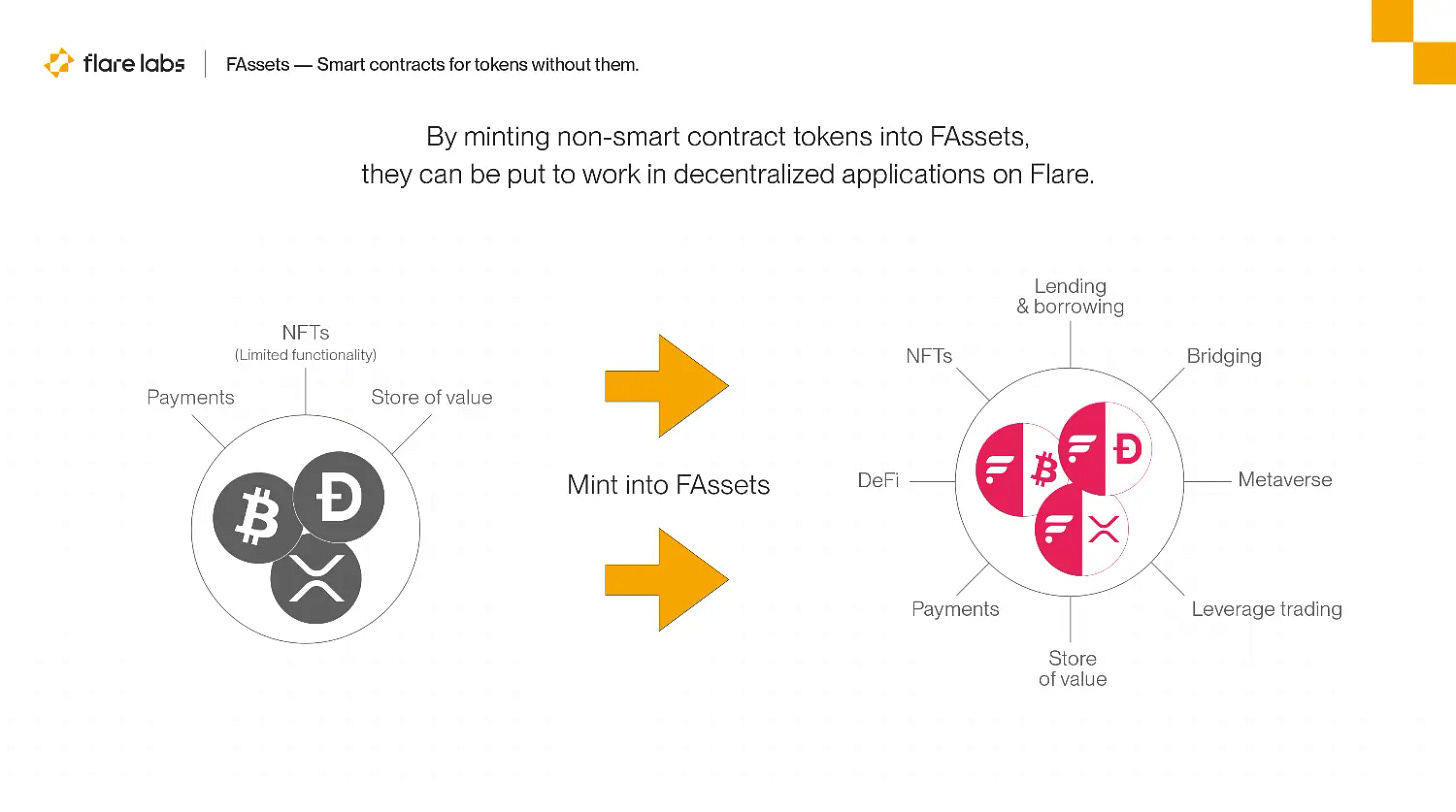Flare 2.0: Streamline Demand, Cross-Chain
Improvements in connectivity between outside liquidity and Flare's ecosystem.
In order for Flare to maximize it’s potential demand it must stay at the forefront of technology. There is large demand for Flare technology where other blockchains fall short. The more Flare scales interoperability with other blockchains, the more outside liquidity enters. Flare 2.0 focuses on just this - streamlining outside liquidity for it’s products, through seamless interoperability with the introduction of Trusted Execution Environments (TEEs) and Protocol Managed Wallets (PMWs).
TEEs play a significant role in order for PMWs to work. To understand TEEs on a basic level, consider unlocking your phone. Just that is a TEE, created to isolate your personal code from anything malicious happening to the rest of the device. A secure area to isolate data, verifiable by generating a proof of something happening, while remaining completely confidential (even from the provider).
Flare consensus will use TEEs and process the signatures among all validators. TEEs can generate and hold a private key without anyone seeing it. They will know what validators should sign and the weight of staking each have. This is all performed within PMW.
The above image displays how PMW will position as a middle man tool between Flare and outside liquidity. Following that thought, the image below outlines how a PMW works. I have highlighted TEEs’ significant role in the process.
Multiple TEEs operate to govern each PMW. Unlike a traditional multi-sig wallet multiple individual key holders) the signing policy is enforced by Flare’s consensus mechanism and TEE’s programming. The code that PMW receives will be the code only it is allowed to use. PMWs give you the ability to build a protocol that holds balances on any chain where it is available on. The user does not have to touch an outside blockchain themselves. This is a much stronger form of interoperability which separates Flare from the rest of the market, an entire new layer of abstraction. PMW allows a very secure, safe way to execute a transaction from Flare on BTC, XRP, or DOGE. Currently, XRPfi and DOGEfi are live on Flare with BTC coming soon. As close as you can get to use a smart contract on a non-smart contract platform. An example could be issuing tokens on XRP ledger; if an institution wants to issue equity/bond/ownership you can do it using a PMW. Greater use of PMW leads to more minting of FAssets further expanding the ecosystem.
Flare’s 2.0 vision involves PMWs’ use of TEEs to secure a foundation, extending it’s data driven capabilities across chains, re-defining cross-chain interoperability. While the update is exciting there is still further to build towards decentralization of the model and onboard new wrapped assets. Streamlining this process will not only satisfy a potential liquidity injection with Flare, but is also an incredible long case for $FLR itself and those who stake with a validator for increased yield.




